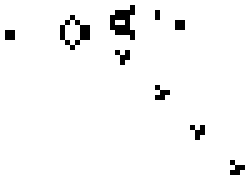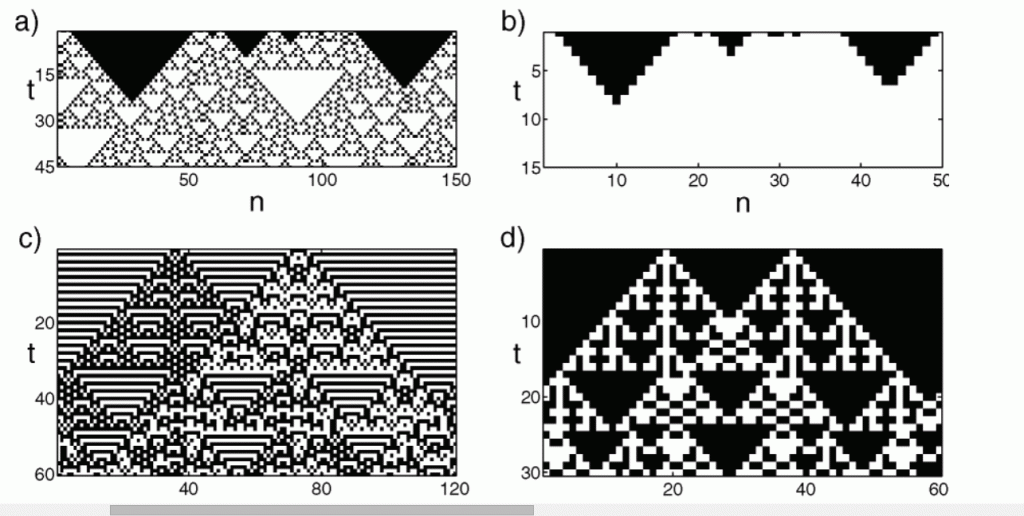Anders Lindman
Penultimate Amazing
- Joined
- Sep 17, 2010
- Messages
- 13,833
"A cellular automaton consists of a regular grid of cells, each in one of a finite number of states, such as on and off (in contrast to a coupled map lattice). The grid can be in any finite number of dimensions. For each cell, a set of cells called its neighborhood is defined relative to the specified cell. An initial state (time t=0) is selected by assigning a state for each cell. A new generation is created (advancing t by 1), according to some fixed rule (generally, a mathematical function) that determines the new state of each cell in terms of the current state of the cell and the states of the cells in its neighborhood." -- http://en.wikipedia.org/wiki/Cellular_automaton
One example of a 2D cellular automaton is Conway's Game of Life:

Instead of the cells having only an on or off value, each cell can be given an integer value, such as in this cellular automaton that produces a static pattern:

Source: http://jsfiddle.net/Hy3LY/
And here is another cellular automaton with integer values that produces a dynamic (moving) pattern:

Source (live demo): http://jsfiddle.net/eqUnv/
One example of a 2D cellular automaton is Conway's Game of Life:

Instead of the cells having only an on or off value, each cell can be given an integer value, such as in this cellular automaton that produces a static pattern:

Source: http://jsfiddle.net/Hy3LY/
And here is another cellular automaton with integer values that produces a dynamic (moving) pattern:

Source (live demo): http://jsfiddle.net/eqUnv/





